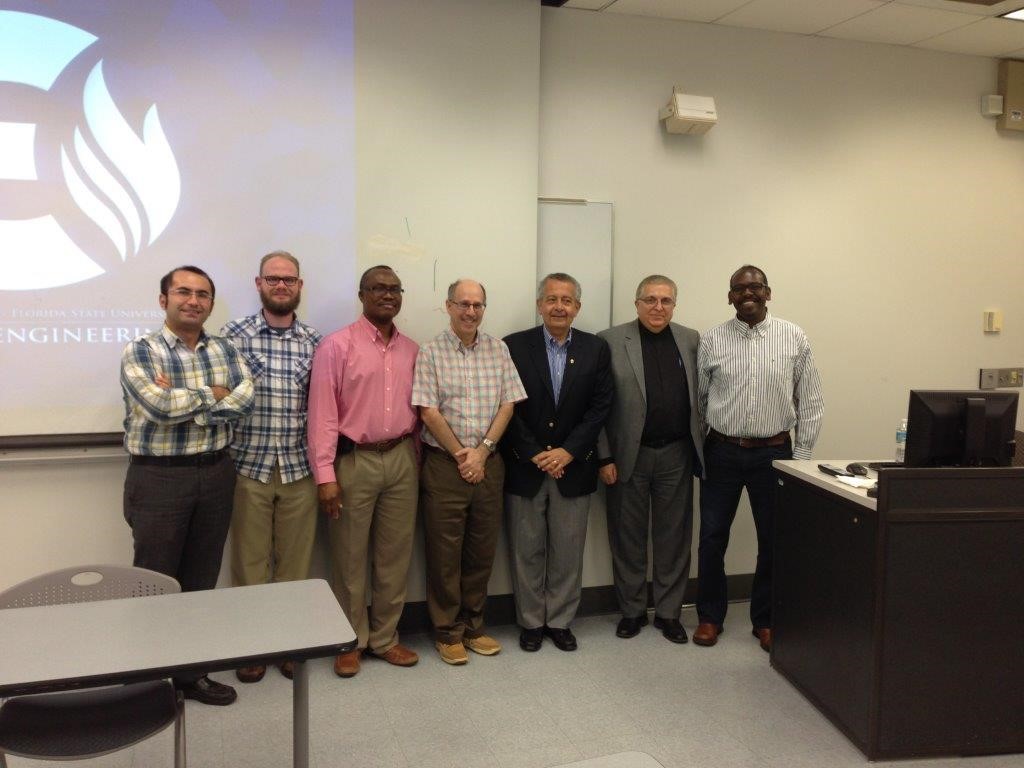November 16, 2015
Dr. Essam Radwan delivered a presentation as part of the Civil and Environmental Engineering Seminar Series, also sponsored by the Center for Accessibility and Safety for an Aging Population (ASAP) and FAMU-FSU College of Engineering. His presentation was titled "Dynamic Flashing Yellow Arrow: A New Left Turn Treatment."

Dr. Radwan is a Professor, College of Engineering and Computer Science, and the Executive Director, Center for Advanced Transportation Systems Simulation, at University of Central Florida, Orlando, Florida. Dr. Radwan received a BS degree in Civil Engineering with honors from Cairo University, Egypt and MS and Ph.D. Degrees from Purdue University. In 1978, he started his teaching career at Virginia Tech where he was tenured and promoted to Associate Professor then he moved to Arizona State University in 1984 and was promoted to full professor in 1990.
Through a national search he was recruited to UCF to chair the Department of Civil and Environmental Engineering and he remained in that position till 2003. In 1998 he was appointed to be the founding Director of the federally established transportation center (CATSS). Professor Radwan research interest is traffic characteristics and traffic signal control of freeway and street intersections. Included in this area are theoretical and applied models, discrete event simulation models, and large-scale databases developed to describe traffic behavior. He directed and co-directed close to 75 research projects totaling over $13 million in external funded research projects. Through research and graduate advising he published more than two hundred and fifty (250) technical papers and reports and his work has been extensively cited by his peers in the US and around the world.
Accommodating and addressing left-turning traffic has been a challenge for traffic engineers as they seek balance between intersection capacity and safety; these are two conflicting goals in the operation of a signalized intersection that are mitigated through signal phasing techniques. Exclusive left-turn lanes and protected left-turn phases are commonly used to minimize the impact of left-turning traffic.
Cycle lengths typically have to increase and the addition of extra time from through phases must be sacrificed. This may contribute to an increase in delay or decrease in operational performance at these intersections. Hence, to increase the left-turn capacity and reduce the delay at the intersections, researchers and traffic engineers found protected/permitted left turn (PPLT) control to be the most effective, thus far. The traditional PPLT signal head has been a five-section configuration with a circular green (CG) indication for permissive left turns as well as the through traffic.However, the use of a four-section head for the left turn lane only with a flashing yellow arrow (FYA) indication for permissive left turns has been deemed to be the new standard for signalization as recommended in the 2009 Manual on Uniform Traffic Control Devices (MUTCD). This presentation describes results of a two-phase project aimed at developing a decision support system (DSS) that is capable of changing the FYA dynamically. The objective of this research is the automation of the decision process at the Traffic Management Center. The research team will develop a software tool, based on the DSS, which would be connected to the controller in the field and automate the modification/selection process of the FYA mode on an hour-by-hour basis. The software tool would receive volume data as well as Signal Phasing and Timing (SPaT) inputs for a given day and generate recommendations. While there are variety of ways to collect volumes, SPaT information will need a specific programming interface.